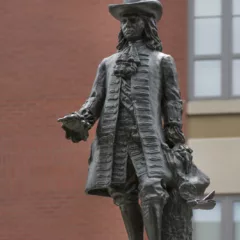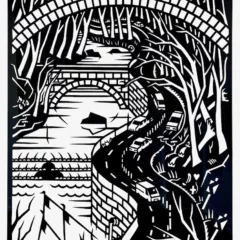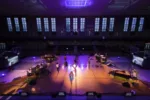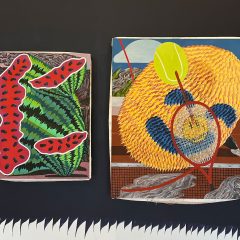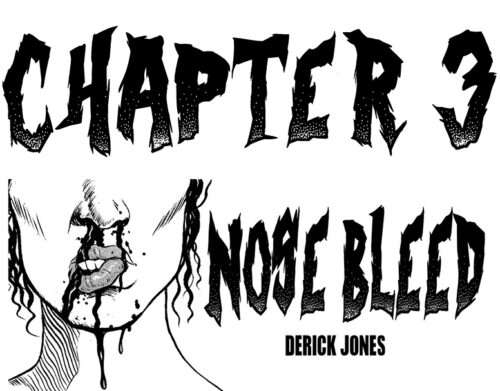By Diana Jih
Becky Suss embraces remembrance and her artistic seasonal affective disorder through a series of multi-textured oil landscapes at her first solo exhibition in Philadelphia, Cold Cold Ground, on display at Space 1026. Her wintry mix of iced-over hidden streams and snowed-in backyard gardens calls to mind the past season and the missing places of spring. Those places exist once again in these recreated memories. During her First Friday opening, “Green River” and “wish you were here” twinged my nostalgia for pockets of rural New England I’ve happened upon in previous years.
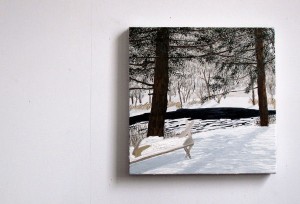
Suss trespasses on my emotions and lays claim to these scenes through the richness of her palette, accuracy of overlapping natural textures, and submission to the sentiments these landscapes stir in us all. The steel-cold, grey shadows covering the softness of the snow mimic the bite of frost on your lips and the chill of winter in your bones. The chipped ice popping through Suss’s blue-black “Green River” captures the idea of the river’s memory melting away with time.
![backyard_detail[1] backyard detail1](https://www.theartblog.org/wp-content/uploaded/backyard_detail1-300x224.jpg)
The artist is compelled to paint these remembered landscapes. She says it’s as natural as wanting to see a photo of them or simply recalling the image in the mind. The viewer’s emotional response to the landscapes attests to the honesty of its memory activation, which for the modern viewer relies not only on personal and collective narratives but also competing images—historical, photographic, remembered, and imagined.
![Emrald-Street_1000[1] Emrald Street 10001](https://www.theartblog.org/wp-content/uploaded/Emrald-Street_10001-300x215.jpg)
The beast of a beaver’s den in the foreground of this piece emerges life-like yet impossible from the winding composition of celestial waterfalls. A few of Suss’s most spirited previous pieces, like “Snake Hill,” often feature twiggy and rocky mammoths whose texture, scale, and perspective disorient and challenge the viewer. Suss references Cezanne’s initial ventures into Modernism’s multiple perspective still-lifes, as she admits to taking on a “snow perspective,” with the first snowfall of the season transforming her perspective on landscape. Having worked on her MFA in Berkeley, CA, she confessed to withdrawals from seasonal landscapes and an inability to escape being seasonally affected. With “Emerald Street,” she admits to “predictably wanting spring” and transitioning from winter to spring as the snow thawed in her mind and on her canvas. A visit to 1026 before the show closes on May 27 allows you to revisit experiences of winter richly symptomatic of Suss’s seasonality and modern explorations of memory.



